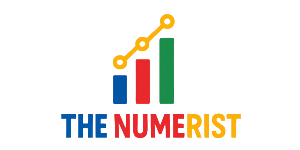BLOG
Mac in the Classroom: Empowering Education Through Innovation

Mac in the Classroom Empowering Education Through Innovation is revolutionizing how students and educators engage with digital learning. As a cornerstone of modern educational technology, Apple’s Mac lineup—ranging from MacBook Air and MacBook Pro to iMac—provides
The Rise of Macs in Educational Environments
In today’s digital-first learning climate, educational institutions are increasingly adopting Mac devices to enhance teaching and learning experiences. Equipped with powerful M-series chips like the M1 and M2, Macs deliver high performance for multimedia projects, software development, and data analysis.

Enhancing Creativity and Collaboration
Mac devices empower students to harness their creativity in dynamic, collaborative ways. Applications like Final Cut Pro and Adobe Creative Cloud support video editing and digital art assignments, helping learners build portfolios while cultivating media literacy. Collaborative platforms such as Google Workspace for Education and Microsoft 365 integrate smoothly with macOS, encouraging real-time teamwork on group presentations and shared documents.
Universal features like AirDrop further simplify in-person collaboration, enabling students to exchange files and ideas effortlessly. The integration of VoiceOver and Switch Control promotes equitable participation, ensuring accessibility and inclusivity for students of all abilities. This support for universal design underscores how Macs reinforce a classroom culture centered on empowerment and shared learning.
Supporting Remote and Hybrid Learning Model
Recent shifts toward hybrid and remote education have underscored the importance of dependable hardware. Macs—with their long battery life, high-resolution Retina displays, and built-in FaceTime HD cameras—capture the demands of virtual classrooms. Students can engage in interactive sessions through Zoom, Microsoft Teams, or Google Meet without lag or connectivity issues, while teachers record flipped‑classroom content for asynchronous instruction.
Complemented by cloud technologies like iCloud Drive and Google Drive, educators can distribute lesson materials, collect assignments, and provide real‑time feedback. The macOS Gatekeeper, FileVault encryption, and regular security updates contribute to a robust cybersecurity framework that safeguards student data and upholds compliance with COPPA, FERPA, and GDPR standards.
STEM Learning and Coding with Mac
The integration of coding into the curriculum is a key educational trend, and Macs excel in accommodating programming instruction. Xcode, Apple’s integrated development environment, lets students build apps using Swift and SwiftUI, making app development more accessible. Meanwhile, cross-platform tools like Python, Java, and web development environments run seamlessly on Mac, offering flexibility for computer science education.
Mac’s UNIX-based operating system supports command-line utilities, containerization tools like Docker, and version control via Git, all integral to real-world software engineering education. Homebrew simplifies package management, enabling students to install and explore a range of open-source libraries. This comprehensive development ecosystem readies learners for careers in software engineering, data science, and IT.
Bridging STEAM and Project-Based Learning
Project-based learning (PBL) thrives in environments that foster interdisciplinary exploration. Macs support STEAM (Science, Technology, Engineering, Arts, Mathematics) initiatives through tools like Tinkercad for 3D modeling, GarageBand for music production, and Python for scientific computing. Students might use Final Cut Pro to produce documentaries on environmental science or employ Swift Playgrounds to design interactive stories, combining research, creativity, and technology.
These activities support deeper cognitive processes such as problem-solving, collaboration, and coding, all essential for 21st‑century skill development. With Macs, students create digital portfolios, seamlessly integrating their work into multimedia-rich presentations and web-based reflections—facilitating peer and self-assessment through digital artifacts.
Accessibility, Equity, and Universal Design
Mac in the Classroom supports accessibility with built-in tools like VoiceOver, AssistiveTouch, and dictation. These capabilities enable students with diverse learning needs to fully participate. Screen magnification, high-contrast modes, and closed captioning adjustments cater to students with visual or hearing impairments, while switch control and eye-tracking systems empower users with motor challenges.
From an equity standpoint, many school districts utilize Apple’s financing programs and benefit from educational discounts, reducing the financial barriers to technology access. Refurbished Mac models offer reliable performance at lower prices. Deploying Mac devices through 1:1 initiatives helps democratize access to digital learning, ensuring all students benefit from innovative instructional tools.
Teacher Empowerment and Professional Development
Teacher adoption of Mac in education relies on quality professional development. Apple Teacher—a free, self-paced training program—supports educators in mastering Mac tools and classroom integration strategies. Topics include iWork applications, iPad integration, coding with Swift Playgrounds, and multimedia lesson design.
Educator-led workshops and peer coaching sessions enable teachers to share best practices, including leveraging macOS Screen Recording to create instructional videos, using Markup for PDF annotation, and facilitating student-driven projects through MacBook collaboration. This investment in professional growth enhances instructional capacity and fosters a transformative learning culture.
Device Management and IT Considerations
From an administrative perspective, managing Mac devices at scale requires robust IT infrastructure. Apple School Manager centralizes deployment of managed Apple IDs, apps, and textbooks. MDM solutions—such as Jamf School, Mosyle, and Kandji—enable automated setup, remote monitoring, app updates, and security compliance.
Best practices for device management include:
- Configuring zero-touch deployment for streamlined distribution.
- Enforcing encryption via FileVault to safeguard sensitive student data.
- Establishing app whitelists and network access controls.
- Scheduling system updates during off hours to minimize disruption.
These measures ensure device reliability and institutional security, enabling educators to focus on pedagogy rather than technical issues.
Measuring Impact: Learning Outcomes and Data Analytics
Evaluating educational technology impact is essential. Macs support data-driven practices through app usage analytics, teacher-led assessments using Kahoot! or Socrative, and assessment tools like Google Forms or Apple Classroom. The macOS Screen Time functionality offers insight into usage patterns that can inform instructional adjustments.
Educators analyze metrics such as writing submissions, coding projects, and multimedia creations to assess growth in creativity, computational thinking, and digital citizenship. Gathering qualitative feedback through student reflections and portfolios deepens understanding of Mac’s benefits to learning experiences.

FAQs
Q: How much does it cost to equip a classroom with Macs?
A: Pricing varies based on models and financing options. Educational discounts lower costs for MacBook Air, MacBook Pro, and iMac. Financing plans through Apple and third-party providers help schools manage budgets effectively.
Q: Can older Macs still be used effectively in classrooms?
A: Yes. Refurbished and older Mac models support educational software, iWork apps, and coding tools. While newer devices may offer better performance, properly maintained Macs remain viable for learning.
Q: Are Macs secure enough for student data protection?
A: Absolutely. macOS includes security features like Gatekeeper, FileVault encryption, and regular updates. Many MDM solutions further support compliance with data protection regulations such as FERPA and GDPR.
Q: Do Macs work with common learning management systems?
A: Macs are compatible with LMS platforms like Canvas, Blackboard, Google Classroom, and Moodle. Web-based access and native app support ensure smooth access to assignments, grading, and communication tools.
Q: Is professional development necessary to use Macs effectively in teaching?
A: Yes. Programs like Apple Teacher and district-level workshops help educators maximize Mac functionality. Regular training ensures effective integration into pedagogy and fosters innovation in teaching methods.
Conclusion
Integrating Mac in the Classroom signals a transformative shift toward technology-rich, student-centered learning. From bolstering creativity and supporting STEM education to securing remote learning and promoting accessibility, Macs empower educators and learners alike.
BLOG
Besos Meaning: A Journey into the Heart of Latin American Culture

Besos is derived from the Spanish language, where it translates to “kisses.” However, the meaning of besos goes beyond a simple translation. It’s a term that encompasses a range of emotions, from affection and love to passion and intimacy.
The Cultural Significance of Besos
In many Latin American cultures, besos are an integral part of daily life. They’re a way to show affection, greet one another, and express love. The cultural significance of besos is deeply rooted in the values of warmth, hospitality, and closeness.

The Different Types of Besos
While the term “besos” is often associated with romantic love, it’s not the only context in which it’s used. Besos can be exchanged between family members, friends, and even as a greeting or farewell.
- A beso on the cheek is a common greeting in many Latin American countries.
- A beso on the lips is often reserved for romantic partners or loved ones.
- A beso on the forehead or hand can be a sign of respect, affection, or blessing.
“I remember my abuela giving me besos on the forehead every night before bed. It was a special moment that made me feel loved and safe.”
The Emotional Significance of Besos
Besos are more than just a physical gesture; they’re a way to convey emotions and connect with others. The act of giving or receiving a beso can evoke feelings of comfort, security, and love.
FAQs
Q: What is the meaning of besos in Spanish?
A: Besos is the Spanish word for “kisses.” It’s a term used to describe a range of affectionate gestures, from romantic kisses to friendly pecks on the cheek.
Q: How do you use besos in a sentence?
A: You can use besos in a sentence to express affection or love, such as “Dale besos a tu familia de mi parte” (Give your family a kiss from me).
Q: What is the cultural significance of besos in Latin America?
A: Besos play a significant role in Latin American culture, where they’re used to show affection, greet one another, and express love.
Q: Can besos be used in non-romantic contexts?
A: Yes, besos can be used in non-romantic contexts, such as between family members or friends. It’s a way to show affection and closeness.
Conclusion
Besos, we discover that it’s more than just a word – it’s a way to connect with others and express our emotions. Whether you’re looking to deepen your understanding of Latin American culture or simply want to show affection to those around you, besos is a term that’s worth exploring further.
BLOG
Luxury Cruise Passengers: Staying Safe on the High Seas

Luxury cruises often traverse through exotic waters, some of which are notorious for piracy. The Gulf of Aden, the Indian Ocean, and parts of Southeast Asia are known hotspots where pirates have been active. These areas are often near popular cruise routes, putting luxury cruise passengers at risk.
Piracy Tactics: How Pirates Target Luxury Cruises
Pirates have become increasingly sophisticated, using tactics like GPS spoofing and fake ship identities to target unsuspecting vessels. They often look for easy prey, such as slow-moving ships or those with lax security. Luxury cruises, with their high-value passengers and cargo, can be attractive targets.
The Human Impact: Stories from Luxury Cruise Passengers
“I was on a luxury cruise in the Gulf of Aden when we received a piracy warning. The crew immediately took action, increasing security measures and altering our course. It was a harrowing experience, but thanks to their quick response, we were safe.” The fear and uncertainty that come with a piracy warning can be unsettling, but being prepared and knowing what to expect can make all the difference.
Staying Safe: Precautions and Measures for Luxury Cruise Passengers
To minimize the risk of piracy, luxury cruise lines have implemented various security measures. These include:
- Traveling in convoys or with naval escorts
- Implementing advanced security systems, such as radar and surveillance cameras
- Conducting regular security drills and training for crew members
- Increasing security personnel on board

What Luxury Cruise Passengers Can Do
While cruise lines take necessary precautions, passengers can also play a role in staying safe. Being aware of the risks and taking simple precautions, such as staying informed about piracy hotspots and following crew instructions, can help minimize the risk of piracy.
Piracy Warning Systems: How Luxury Cruises Stay Ahead
Luxury cruise lines use advanced piracy warning systems to stay informed about potential threats. These systems provide real-time updates on piracy hotspots and suspicious activity, enabling crews to take proactive measures to avoid danger.
The Role of Technology in Piracy Prevention
Technology plays a vital role in preventing piracy. Advanced systems, such as satellite tracking and AI-powered surveillance, help cruise lines stay one step ahead of pirates. These technologies enable crews to respond quickly and effectively in the event of a piracy warning.
FAQs
Q: What should I do if I receive a piracy warning on my luxury cruise?
A: If you receive a piracy warning, follow the instructions of your crew immediately. They are trained to handle such situations and will take necessary precautions to ensure your safety.
Q: Are luxury cruises more vulnerable to piracy than other types of cruises?
A: Luxury cruises can be attractive targets for pirates due to their high-value passengers and cargo. However, luxury cruise lines often have advanced security measures in place to minimize the risk.
Q: How can I stay informed about piracy hotspots and safety measures on my luxury cruise?
A: Your cruise line will provide you with information about piracy hotspots and safety measures in place. You can also stay informed through government travel advisories and industry reports.
Q: Can I travel safely on a luxury cruise despite the risk of piracy?
A: Yes, with the right precautions and awareness, you can travel safely on a luxury cruise. Cruise lines take piracy seriously and have measures in place to protect passengers.
Conclusion
Luxury cruise, staying informed about piracy risks and taking necessary precautions can help ensure a safe and enjoyable journey. By understanding the risks and being aware of the measures in place to prevent piracy, you can relax and enjoy your time on board.
BLOG
Mandarin for Mandarin: Tips and Tricks for Language Learners

Mandarin can be a rewarding and enriching experience, especially when you focus on learning Mandarin for Mandarin. By doing so, you can:
- Improve your pronunciation and intonation
- Develop a deeper understanding of Chinese culture and history
- Enhance your career opportunities in China or with Chinese companies
Immersing Yourself in the Language
One of the most effective ways to learn Mandarin for Mandarin is to immerse yourself in the language. This can be done by:
- Watching Chinese movies and TV shows
- Listening to Chinese music and podcasts
- Speaking with native Mandarin speakers
For example, “I started watching Chinese dramas with English subtitles and it really helped me improve my listening skills and get used to the natural flow of the language.”

Tips for Learning Mandarin for Mandarin
When it comes to learning Mandarin for Mandarin, there are several tips to keep in mind:
- Focus on tones and pronunciation
- Practice speaking and listening regularly
- Use language learning apps and resources
Using Language Learning Apps
There are many language learning apps available that can help you learn Mandarin for Mandarin. Some popular options include:
- Duolingo
- HelloTalk
- Pleco
FAQs
Q: What is the best way to learn Mandarin for Mandarin?
A: The best way to learn Mandarin for Mandarin is to immerse yourself in the language by watching Chinese media, speaking with native speakers, and practicing regularly.
Q: How can I improve my Mandarin pronunciation?
A: You can improve your Mandarin pronunciation by listening to native speakers, practicing speaking regularly, and using language learning apps that focus on pronunciation.
Q: What are some common challenges when learning Mandarin for Mandarin?
A: Some common challenges include mastering tones, understanding grammar and syntax, and finding opportunities to practice speaking and listening.
Q: Can I learn Mandarin for Mandarin on my own?
A: Yes, you can learn Mandarin for Mandarin on your own with the right resources and motivation. However, it’s also helpful to work with a language exchange partner or tutor to get feedback and support.
Conclusion
Mandarin for Mandarin requires dedication, persistence, and the right resources. By immersing yourself in the language, practicing regularly, and using the right language learning tools, you can achieve fluency and unlock new opportunities. Whether you’re a beginner or advanced learner, there’s always room to improve and refine your Mandarin skills.
-

 TECH6 months ago
TECH6 months agoApple iPhone 17: Official 2025 Release Date Revealed
-

 BLOG6 months ago
BLOG6 months agoUnderstanding the ∴ Symbol in Math
-

 EDUCATION6 months ago
EDUCATION6 months agoHorizontal Translation: How to Shift Graphs
-

 EDUCATION6 months ago
EDUCATION6 months agoUsing the Quadratic Formula
-

 EDUCATION6 months ago
EDUCATION6 months agoThe Meaning of an Open Circle in Math Explained
-

 HEALTH6 months ago
HEALTH6 months agoGoodNever: Wellness, Simplified
-

 EDUCATION6 months ago
EDUCATION6 months agoWhy Does m Represent Slope?
-

 EDUCATION6 months ago
EDUCATION6 months agoHow to Solve Quadratic Equations 2
